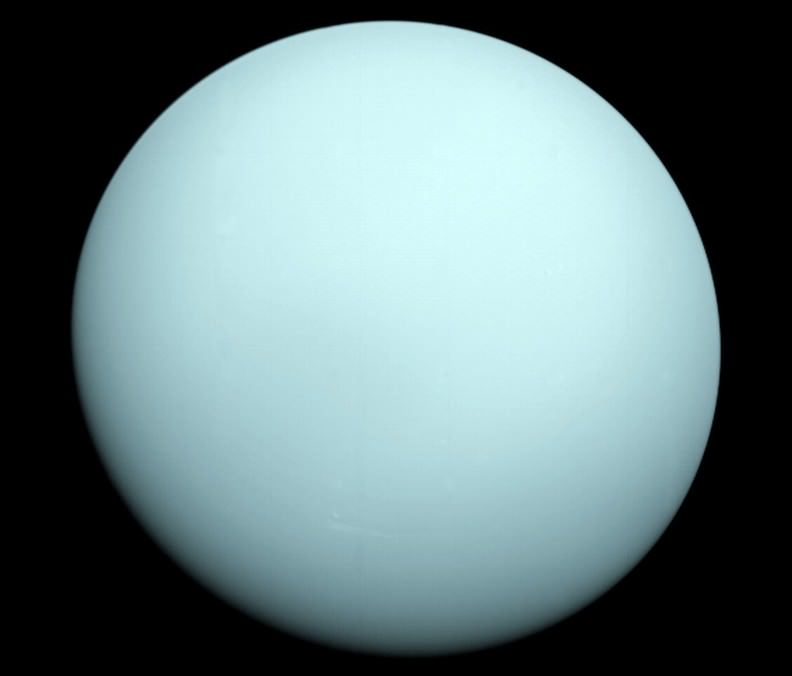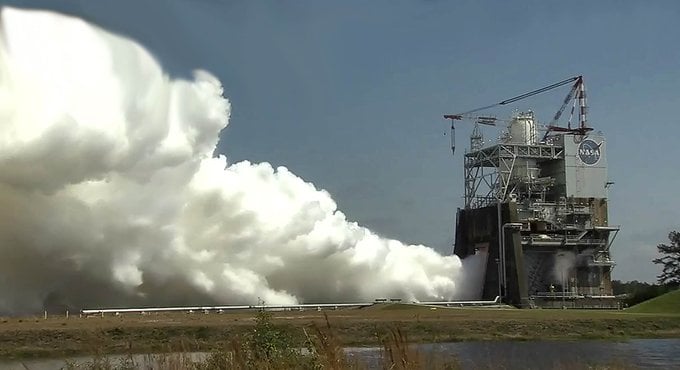
Continue reading

During the month of April, 2017, Jupiter will make its closest approach to Earth, allowing for some prime viewing opportunities for the Hubble Space Telescope.
Continue reading

Ongoing observation of exoplanet GJ 1132b has revealed a dense atmosphere, a finding which has great significance in the hunt for life beyond Earth.
Continue reading

Continue reading

Continue reading

Every two years, Earth and Mars reach the closest points to each other in their orbit, which is referred to as a "Mars opposition".
Continue reading

Continue reading

This year's Yuri's Night promises to be a momentous occasion, with celebrations and events taking place all over the world!
Continue reading

In the course of observing an explosion in a distant galaxy, a team of researchers noticed something unprecedented - a supernova in slow-motion.
Continue reading

Been missing the evening planets? Currently, Saturn and Venus rule the dawn, and Mars is sinking into the dusk as it recedes towards the farside of the Sun. That's been changing for one planet, however, as Jupiter reaches opposition this week.
Continue reading

With the successful launch of a reused Falcon 9, Musk has revealed additional details about the maiden launch of the Falcon Heavy, which is scheduled for this summer.
Continue reading

PORT CANAVERAL/KENNEDY SPACE CENTER, FL - Basking in the sunrise glow, the world's first recycled booster - namely a SpaceX Falcon 9 - sailed serenely into Port Canaveral this morning, Tuesday, April 4, atop the tiny droneship on which it soft landed shortly after launching on March 30 for an unprecedented second time.
Continue reading

Continue reading

The TRAPPIST-1 star might flare too frequently and too violently for life to exist on the TRAPPIST planets.
Continue reading

Continue reading

A team of international astronomers recently found the closest thing to a "Venus-like" planet in a nearby star system, which could have drastic implications for "habitability" studies.
Continue reading

Continue reading

A study by an international team of researchers has revealed that Mars' Trojan asteroids could be the remains of ancient planetoids, which could have drastic implications for the history of planetary formation
Continue reading

Had your fill of binocular comets yet? Thus far this year, we've had periodic comets 2P/Encke, 45P/Honda-Mrkos-Pajdušáková and 41P/Tuttle-Giacobini-Kresák all reach binocular visibility above +10th magnitude as forecasted. Now, we'd like to point out a surprise interloper in the dawn sky that you're not watching, but should be: Comet C/2017 E4 Lovejoy.
Continue reading

KENNEDY SPACE CENTER, FL - SpaceX CEO Elon Musk's Billion dollar bet on rocket recycling paid off beautifully when the world's first ever reflown rocket booster - a SpaceX Falcon 9 - roared off NASA's historic pad 39A at the Kennedy Space Center and successfully delivered the next generation SES-10 TV satellite to orbit and simultaneously shot revolutionary shock waves reverberating forever across the rocket industry worldwide.
Continue reading

Using data from the Chandra observatory, a team of researchers witnessed the most distant X-ray explosion ever observed, and are not sure what caused it.
Continue reading

This week, astronauts conducting a spacewalk had to perform an impromptu patch-up job when one of the ISS' shields broke off and floated away.
Continue reading

Continue reading

Continue reading

The New Mexico-based aerospace company ARCA recently unveiled its Haas 2C rocket, the first single-state-to-orbit rocket in history.
Continue reading

KENNEDY SPACE CENTER, FL - SpaceX accomplished an American 'Science Triumph' with today's "Mind Blowing" and history making second launch and landing of a previously flown Falcon 9 booster that successfully delivered a massive and powerful Hi Def TV satellite to orbit for telecom giant SES from the Kennedy Space Center.
Continue reading

The Smithsonian Astrophysical Observatory and Draper are helping NASA to develop the Solar Probe Plus, the first spacecraft that will "touch"the face of the Sun.
Continue reading

NASA's Mars Reconnaissance Orbiter has completed 50,000 orbits. It has now imaged over 99% of the Martian surface.
Continue reading

KENNEDY SPACE CENTER, FL - The moment of truth is rapidly approaching as SpaceX attempts the world's first reflight of an orbital class rocket later today, Thursday, March 30, with the firms Falcon 9 standing proudly at historic launch complex 39A at NASA's Kennedy Space Center in Florida - ready to deliver an advanced TV broadcast satellite to orbit for the America's for telecom giant SES.
Continue reading

A year on Uranus lasts almost as long as a century on Earth. And because of its extreme tilt, its polar regions experience 42 years of light and dark during the course of it.
Continue reading

CAPE CANAVERAL/KENNEDY SPACE CENTER, FL - As the hours tick down to the history making liftoff of the world's first recycled rocket, the commercial customer SES is proclaiming high "confidence" in the flight worthiness of the "Flight-Proven" SpaceX Falcon 9 booster that will blastoff with a massive Hi-Def TV satellite for telecom giant SES this Thursday, Chief Technology Officer Martin Halliwell told Universe Today at a media briefing.
Continue reading

Light's finite speed make all gazing a ride in a time machine. Only a photon truly lives in the moment.
Continue reading

Continue reading

Given its extreme distance from the Sun, Pluto has a very long orbital period. As such, a single year on Pluto lasts as long as 248 Earth years, or 90,560 Earth days!
Continue reading

Thanks to the New Horizons mission, which conducted the first detailed study of Pluto in 2014, we know that Pluto's color is rather diverse, with patches of white, yellow and reddish-brown.
Continue reading

The average distance between the Sun and the Earth - 149,597,870.7 km (or 92,955,807 mi) - is known as an Astronomical Unit (AU).
Continue reading

SPACE VIEW PARK/KENNEDY SPACE CENTER, FL - This afternoons (Mar. 27) successful hotfire test of a recycled Falcon 9 booster at the Kennedy Space Center sets SpaceX on course for a rendezvous with history involving the first ever relaunch of a 'Flight-Proven' rocket later this week.
Continue reading

Located in the direction of the northern Auriga constellation, some light 4,200 years from Earth, is the open star cluster known as the Starfish cluster (aka. Messier 38)
Continue reading

Continue reading

Engineers carried out a critical hot fire engine test firing with the first new engine controlling 'brain' that will command the shuttle-era liquid fueled engines powering the inaugural mission of NASA's new Space Launch System (SLS) megarocket.
Continue reading

There are so many cool astronomical sights to see in late March including Mercury and a brand new comet!
Continue reading

Europa is fine and all, but where we really need to go is Saturn's moon Titan. Let's look at some cool ideas for probes to fully explore this world.
Continue reading

Juno will perform its 5th flyby of Jupiter, Monday, March 27, at 1:52 a.m. PDT. Prepare yourself for some fantastic images.
Continue reading

CAPE CANAVERAL AIR FORCE STATION, FL - The second round of March Launch Madness continued with the thunderous nighttime blastoff of a ULA Delta IV rocket powering a super swift military communications satellite to orbit in a collaborative effort of U.S. Allies from North America, Europe and Asia and the U.S. Air Force.
Continue reading

Watch several dozen stars in the center of our galaxy circle a massive, black "nothing."
Continue reading

A new study released by a team of international scientists has offered another explanation for Recurring Slope Lineae on Mars, one which doesn't rely on the existence of water.
Continue reading

Synlight, the world's largest artificial Sun, will help German researchers extract hydrogen fuel from water using solar energy.
Continue reading

Images presented at the 48th Lunar and Planetary Science Conference this week showed the first indication of gravity waves around the Martian equator.
Continue reading

KENNEDY SPACE CENTER, FL - The fierce competition for lucrative launch contracts from the U.S. Air Force just got more even intense with the announcement that SpaceX outbid arch rival United Launch Alliance (ULA) to launch an advanced military Global Positioning System (GPS III) navigation satellite to orbit in approx. 2 years.
Continue reading

If the results in a new study are accepted, the dinosaur family tree will be getting overhauled.
Continue reading


















































